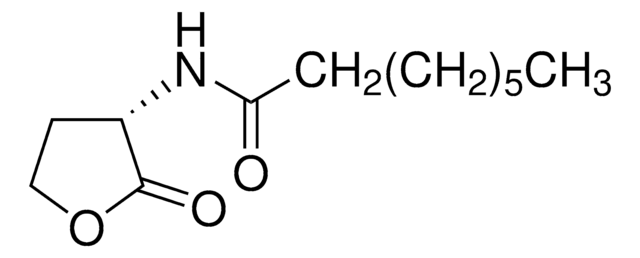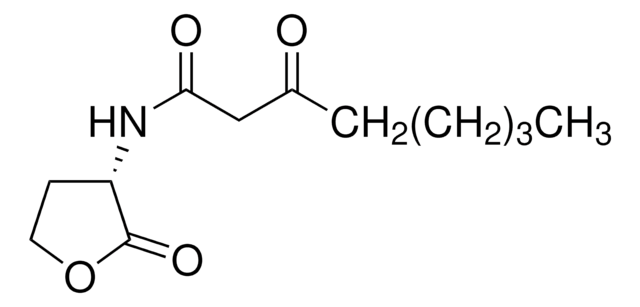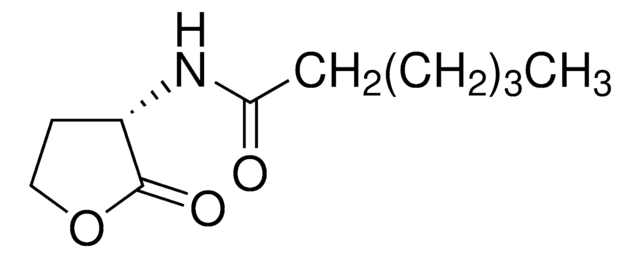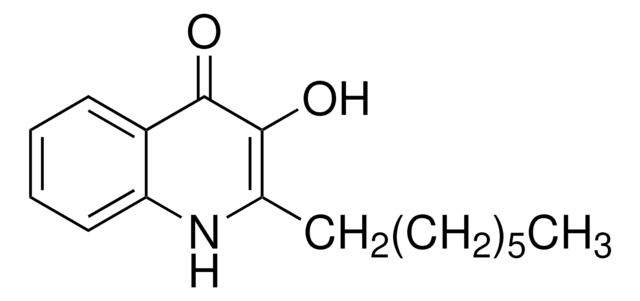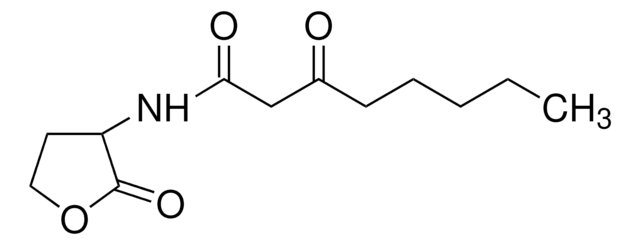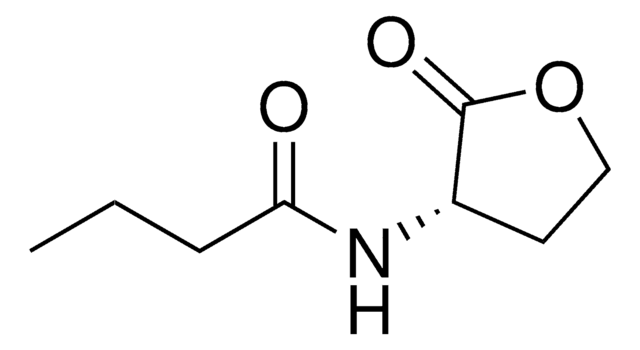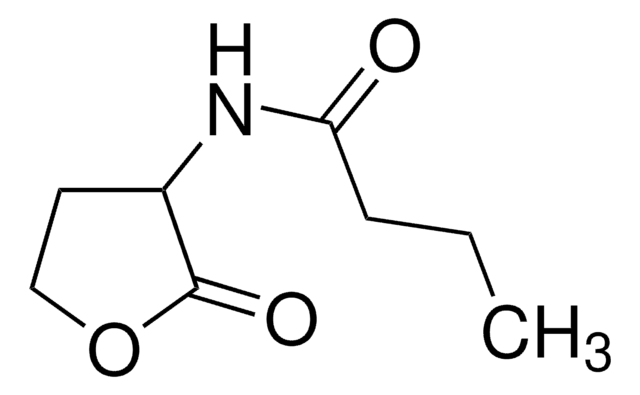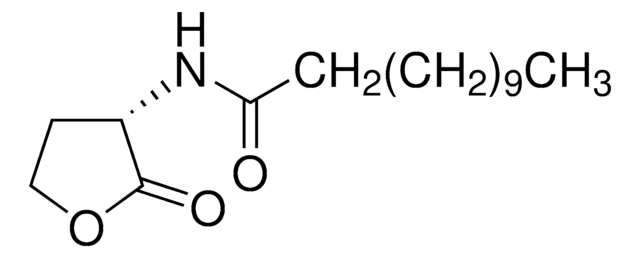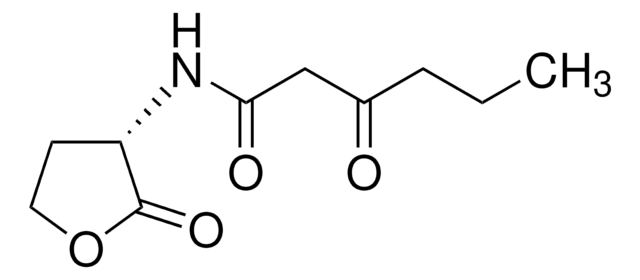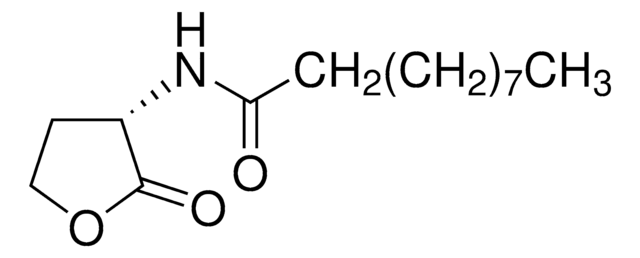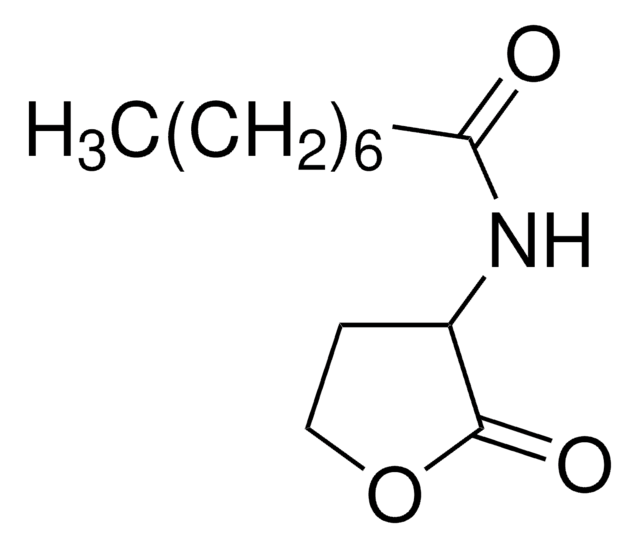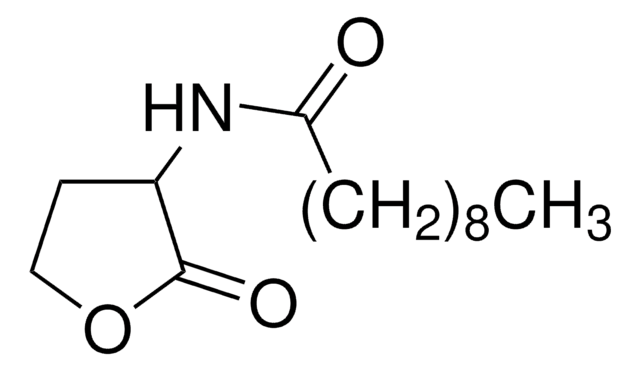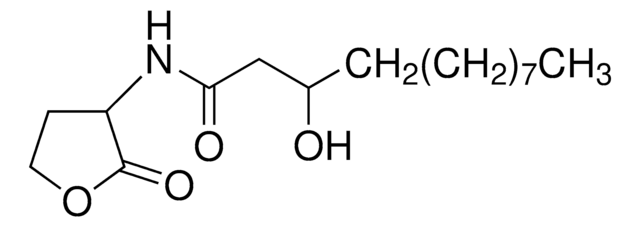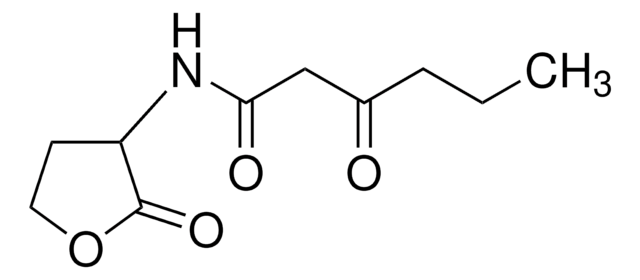O9139
N-(3-Oxododecanoyl)-L-homoserine lactone
≥98% (TLC)
Synonyme(s) :
3-Oxo-C12-HSL
About This Item
Produits recommandés
Nom du produit
N-(3-Oxododecanoyl)-L-homoserine lactone, quorum sensing signaling molecule
Niveau de qualité
Essai
≥98% (TLC)
Forme
powder
Couleur
white
Application(s)
cell analysis
Conditions d'expédition
wet ice
Température de stockage
−20°C
Chaîne SMILES
CCCCCCCCCC(=O)CC(=O)N[C@H]1CCOC1=O
InChI
1S/C16H27NO4/c1-2-3-4-5-6-7-8-9-13(18)12-15(19)17-14-10-11-21-16(14)20/h14H,2-12H2,1H3,(H,17,19)/t14-/m0/s1
Clé InChI
PHSRRHGYXQCRPU-AWEZNQCLSA-N
Application
Actions biochimiques/physiologiques
Souvent commandé avec ce produit
Mention d'avertissement
Warning
Mentions de danger
Conseils de prudence
Classification des risques
Acute Tox. 4 Oral
Code de la classe de stockage
11 - Combustible Solids
Classe de danger pour l'eau (WGK)
WGK 3
Point d'éclair (°F)
Not applicable
Point d'éclair (°C)
Not applicable
Équipement de protection individuelle
dust mask type N95 (US), Eyeshields, Gloves
Faites votre choix parmi les versions les plus récentes :
Déjà en possession de ce produit ?
Retrouvez la documentation relative aux produits que vous avez récemment achetés dans la Bibliothèque de documents.
Les clients ont également consulté
Biosynthesis in Pseudomonas aeruginosa PAO1
Notre équipe de scientifiques dispose d'une expérience dans tous les secteurs de la recherche, notamment en sciences de la vie, science des matériaux, synthèse chimique, chromatographie, analyse et dans de nombreux autres domaines..
Contacter notre Service technique